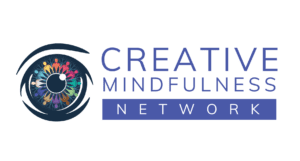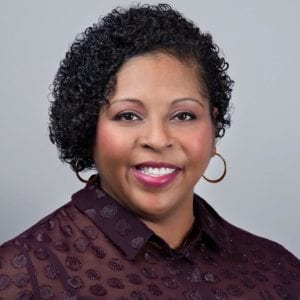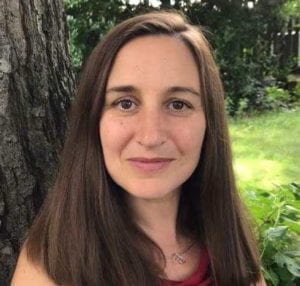One of the reasons that I/we decided to come out in the EMDR community as a person with a dissociative system (having been formally diagnosed in 2004) is that we grew frustrated with how respected teachers and consultants in the community explained both dissociative responses and plurality. For years we made a conscious decision to keep our lived experience under wraps knowing how we would be judged, as we tried to learn from and make sense of what those who taught on dissociation had to say. While we learned some great stuff, namely from the contributors we mention in Dissociation Made Simple, many of the concepts that circulate the EMDR community as truths simply did not resonate with our lived experience. And then we started talking to other plural therapists and realized there was a great deal of shared sentiment. A motivating factor in putting Dissociation Made Simple together was to tell another story about dissociation; the story of empowering systems with choice and agency to define what healing looks like for them. Maybe that includes “integration” in a classic sense, maybe that means working towards what we are now calling functional multiplicity, a term that has its own problems yet is a step in the right direction. Our system currently likes the concept of improving the communication between the parts in our systems while embracing them all because for us, integration feels violent. Especially the way a lot of folks in the establishment study of DID define it. And in recent months, since meeting even more plural EMDR therapists or EMDR therapists with dissociative experiences, we are discovering that there is even more to say. In this blog, we are happy to feature some insights shared by others.
“If you have come here to help me you are wasting your time, but if you have come because your liberation is bound up with mine, then let us work together.” (Lila Watson)
“This is one of my favorite quotes and reflects this topic. If your goal as my therapist is to work together and do what’s best for me and my system. Then, let’s work together. If your goal as my therapist is to integrate my parts, please refer me out and leave us alone. Our healing journey has nothing to do with anyone else. What’s best for me/ us is not integration. As someone with parts and derealization throughout the lifespan, what I need is validated and heard and told my experience is real. All my parts deserve healing and a safe, agenda free, space to heal.”
-Andrea Lisowski
“Given that final fusion only has a success rate of 12.8% after six years, it just doesn’t seem like a realistic or sustainable option. And, as someone who’s probably been Plural since the start of my life, I don’t see how final fusion could make me into a singlet, unless it’s like conversion therapy where Queers are taught to behave like cishets- but don’t actually change into cishets.
I can’t imagine spending the rest of my life pretending to be something I’m not. I’m not an “imaginary friend” and neither are the other members of my system. It’s amazing that establishment therapists and researchers refuse to listen to, learn from, and respect voices of lived experience. In what other cultural context would outsiders be allowed to write the stories of group members?”
-Melissas Parker
“When one of my Parts is having a hard time, maybe even having maladaptive behaviors, the other Parts will often surprise me by spontaneously gathering around the challenging part, putting their hands gently on the Part’s back and shoulders, telling them how much they love the Part. It moves me to tears witnessing that. I get to experience lovingkindness in a 3D way as a system, in a way that I don’t think I would as a singleton. Of course it’s not all roses, but I value the internal shared experience of Love that I get to have as a system.”
-Anonymous
“I take umbrage with anyone who says that we celebrate or glorify our alters as the destination. For us, it was a very carefully thought out decision that we came to with our therapist. It has meant accepting ourselves radically for who we are and has led to much better functioning.If they have any idea what going through our trauma was like, maybe she would see that leaving things at a functional, contented place has value. I now have “fly eyes” from integration, which can be useful and also confusing, from the integration of a bunch of alters. Life is not as difficult to organize. But Angel and I both realized that we need both of us to manage life, knowing that some of each of us would be lost if we integrated. Maybe she thinks people keep all of their parts’ knowledge, skills, talents etc. with integration but we do not.”
-Sandra Johnson
“Final fusion of selves is not something that we, as a system of dissociative identities, strive for in our trauma recovery. It’s not necessary to fuse in order to experience healing because being a multiple isn’t what distressed us. The most healing experiences for us are when our selves are able to coexist peacefully and when they can demonstrate kindness and compassion for each other. Living with mutual internal respect between selves with vastly different values brings us more of a sense of wholeness than the one fusion that we did have between two of our roughly 15 member system. For us, that fusion was more of a loss of self. Finding co-consciousness and creating internal compassion where each of us takes part in experiencing what life has to offer has created the self acceptance where we can truly love each and every self. Having all of us just the way we are gives us the ability to maintain our unique perspectives and honor the differences between each self. The focus is about self-love for all of us and suggesting that one needs to become an I instead of a we shifts the focus off the true healing work.”
-The Garden System
“These structural dissociation folks make me want to scream.”
-Mike Elliot
“Much of the shame, fear, confusion, and overwhelm that some folks feel about their own plurality is based in others’ judgment, avoidance, lack of understanding, and stigma. If dissociative identities were treated with open curiosity, love, and empathy, many people would be more readily able to accept others and themselves.
Having dissociative identities is not something that needs to be “fixed.”. The way that we developed is not wrong, and just because it may be different from others does not mean that it has to be eradicated in treatment, or be called imaginary. Dissociative systems should be supported in healing and exploring what is right for them. We have experienced a great deal of growth and change without final fusion. Connecting with and respecting our own plurality throughout this process has given us strength, joy, insight, hope, and love – all of which are ingredients for recovery. Imagine being told that the very foundation of you, the way that you are structured, is something that you need to eliminate in order to heal. Would you be comfortable with a therapist stating that you need to become plural, if that wasn’t natural for you and was considered “the norm”? That type of suggestion is void of acceptance, and is delivered with the assumption that there is something wrong with you. We can do better than this, and understand that parts or alters can be an asset.
The arrogance of the mental health profession in assuming that they always know what’s best for their clients’ health and wellbeing without taking their perspectives seriously is the impairment. You do not get to decide whether we are sick when you lack lived experience and thorough self-examination on your resumes; it’s worth noting, too, that a thorough inventory of our selves would include openly exploring the ways in which we dissociate, whether or not they are scientifically sanctioned. Consider open-minded, compassionate listening and learning; this is where healing and knowledge can grow. Above all, remember that we are human, and our lived experience is inherently worthy of being recognized.”
-L.S.+
“Before starting EMDR I’d like a therapist to get to know my system and how each part prefers to be grounded. I’d like to discuss what their values and beliefs are around dissociation. I’d like to have an agreed upon way for the therapist to “check-in” if they think I am dissociating too much (eye roll). AND if they interrupt re-processing because they think I’m dissociating too much – and IF I say I was great and would like to continue – I’d really like to be trusted. I really have no desire to see another trauma therapist that hasn’t read Dissociation Made Simple because I’m so tired of all the therapist gaslighting that is addressed specifically in the DMS (BTW I just realized that the abbreviation is the same as my least favorite book the DSM lol). Oh my last thing: I told a therapist once about suicidal thoughts/tendencies and described what seems to activate this part. I was as calm as could be. I cannot tell you how grounded I was. She proceeded to guide me through 5 things I see, hear and feel. It was embarrassing and I thought it was uncalled for. I brought it up to talk about a worry I had and instead she went right into safety planning. I did the 5-4-3-2-1 because there was a part of me that thought if I didn’t she might call an ambulance.”
-G.H.
“Since my discovery of having a system, an internal family, I have been more open and authentic and suddenly, this awkward-something-unknown that has always kept me down like a weighted blanket, is disappearing. I am realizing that I have an inner family of distinct separate pieces that make up a whole person, Me. Although I don’t know all of them well (yet), I am grateful that they helped me get to where I am today and that my brain organically created my system in an effort to help me survive unspeakable traumas and developmental wounds. Realizing that I have parts is helping me…us…to finally let go of the shame that has been a heavy burden and way of life for too long. Shame, and what it does to the soul can cut to the core of even the healthiest person or most skilled clinician. Shame was what kept me wanting to die, yes, I said it. Shame was what kept me thinking I was damaged goods and that there was Nothing I could Ever do to be good enough. Shame is what kept me silent, hell-bent on self destruction, and burdened for something that I didn’t even do…it was what was done to me and what I experienced. Since finding out about my system, I have done things to help slowly remove the stigma that has been here for too long for those of us with lived dissociative experiences such as speaking on a panel about our lived experience, openly talking with other clinicians, clients, students, friends, and family, advocating for our field, and yes, even sharing what we have learned about our own process with well-known and esteemed colleagues who have done some incredible and important research in the field and who we feel we need to reach in order to build a bridge where research and lived experience CAN EXIST TOGETHER. This does not mean my work is over. What this does mean is that I am FINALLY finding my place in this world…that maybe I do belong, that I am ok, that I am not too broken/disgusting/worthless and that maybe…I can choose to live, really live.”
-Michelle Kahl
“We did not choose the ways in which we were touched, nor did we choose the ways the touching rendered us disunited. I was born cloth, fabric swatch, & did not choose the ways in which I was forced to unravel into the fuzzy, humming “we” of ripped seams.
The world enacts upon this body-mind, renders me into we…into object-not-person. To survive: Imagination severed, turned dark, barely breathing, its persistent brilliance driven to go on.
Please: Witness me. I, this great internal collective, sing across space & time. Light & dark, acceptance & denial, isolation & connection, glimmer & trigger, each filament of the in-between. Do not ask me now to be small, to pretend to be untouched.
I choose now.
We choose, now, to collect the threads that were loosed & unwoven by the betrayals committed upon this body-mind. We choose, now, to weave those threads — our threads, the inheritance of great terror & pain — into a winding, twisting, ephemeral symphony of strings that warbles, grieves, & sings. Separate. Whole. One & many. Complete.”
-Jess Storm
“Therapy is a collaborative process where the relationship itself is the vehicle that drives healing forward. The goals of therapy are identified and set by the client, typically with input from the therapist. When a therapist defines integration as final fusion and then final fusion as the only acceptable goal for someone with dissociative identities, harm occurs. First and foremost, it undermines the client by denying them their right to autonomy and self-determination. In trauma survivors, that is not only unethical, but also overtly harmful. Final fusion or “becoming one” as the only goal is ableist at best. Many therapists agree that there are many instances of such pervasive and severe trauma that final fusion is highly unlikely. How, then, are those clients impacted emotionally by the idea that they will “never be whole” when final fusion is defined as the only acceptable therapeutic goal? This only perpetuates stigma and the pervasive feeling of being defective. That dynamic is happening to the most vulnerable people who desperately need and deserve to know that their providers believe in their innate worth and in themselves as people-however it is that they are defining themselves.
Providers who refuse to openly receive feedback from people with lived experience and differing viewpoints, and citing their “long standing positive reputation and track record” as evidence for why their opinion should be accepted as fact, is a provider who is traversing dangerous territory. At some point, if it hasn’t already, it will lead to serious harm. Referring to parts as “imaginary friends” is purposefully disrespectful, unnecessary and demeaning. Dissociative identities are no more imaginary than the provider’s own work parts, parent parts, or inner child parts are. Granted the level of differentiation and internal structure is vastly different, but each of those experiences is undeniably real.
When providers can facilitate the sharing of information between parts, clients progress faster. From a personal standpoint, a provider seeing my/our DID as something shameful and “not to be encouraged or indulged” was undeniably harmful. First, please remember that this condition is not something we ever asked to experience, nor did we ask to experience the horrific, lengthy circumstances that created it. We also did not ask for the fallout from the False Memory Syndrome movement that prevented treatment when initially diagnosed that, by default, led to seeking healing later in life. There has been more than enough internal shame and selves-loathing without the provider’s judgmental opinions and attitudes and overt shaming of parts’ presence.
Finding a compassionate, skilled provider who was curious about our system of parts, how they worked together or against each other, where information was stored, who oversaw information, tasks etc. was nothing short of revolutionary. Her curiosity and genuine caring about our parts was what allowed us to begin to be curious about ourselves while simultaneously building compassion for each other. We’ve waited half a century to heal, and it was her curiosity, advanced skillset, flexibility, genuine caring and nonjudgmental acceptance of all parts that finally allowed healing to progress. We are collaboratively working toward a life that feels good and in which we genuinely function well across all areas. Whether that is achieved via functional multiplicity or final fusion is irrelevant. Whatever works. Relinquishing the belief that “the only acceptable path is final fusion via parts ‘talking through’ a ‘main part’,” and focusing on clients’ bona fide well-being is where real healing happens-and that, after all, is the entire point and ultimate goal. Let’s get back to focusing on that.”
-Healing My Parts
“If integration/fusion is the goal without consent from the system/selves, then we not only miss out on beautiful selves, but also severely harm them. Plural folks get to live the special experience of revisiting earlier life that non-plural folks either can’t or struggle to fully embody the way we do. Although this can include pretty awful experiences and pain, it also includes remarkable moments of unconditional love.
My lived experience includes living with selves as babies, selves as children, as teenagers, and young adults to their fullness of who they are. This type of living for me includes fully embodying these selves with so much fun! We get to play and nurture the 6 year old self that was severely punished for jumping into the mud to catch frogs. Only this time around we get to do it together and laugh with pure joy. We get to embody holding and singing to the baby selves who so badly want to return to the womb because life out here was not fair or loving to them. So they coo, giggle, listen closely to heart beats during cuddling, and soak in the warmth the body feels every day in the shower.
Our selves DESERVE to be here and loved as they are without the impending doom of having to leave forever. Which, in reality, results in selves being locked in a box somewhere inside, not *real* integration/fusion.Integration at the choice and consent of the system is like pruning a rose bush to help it grow. (We can acknowledge that unpruned rose bushes still grow and blossom anyway!) Forced fusion/integration is more like pulling the rose bush out of the soil and clipping the roots off entirely. We don’t care for rose bushes by pulling them out of the ground and clipping their roots.. so let’s not care for our plural folks the same way by forcing integration/fusion as the goal for healing.”
-Grace Kanzenbach















One Response
At last. Thank you personally and professionally. Reading this has left me feeling a deep sense of peace and calm.